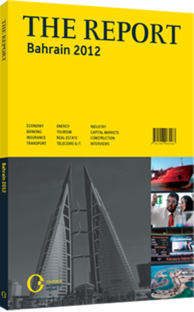OBG talks to Abdulkarim Ahmed Bucheery, Chairman, Bahrain Association of Banks (BAB)

Interview: Abdulkarim Ahmed Bucheery
To what extent was liquidity in the banking sector affected by the unrest during 2011? Was there any flight of capital from Bahrain’s banks?
ABDULKARIM AHMED BUCHEERY: One must remember that the political issues in Bahrain coincided with the economic situation in Europe. With the troubles in that region, many of the financial institutions in the Gulf that in the past kept part of their excess liquidity with European banks decided to shift those funds back to the Gulf. As a result, the stronger banks in the region have benefitted from this capital returning home. In fact, liquidity ratios of the banks in the Gulf region have been very strong. This is particularly true in Bahrain, where banks have actually been suffering from excess liquidity. The challenge for 2012, as it was in 2011, will be finding ways to deploy this excess capital in a profitable way.
I am almost certain that there was no flight of capital attributed to the political unrest that needs to be discussed. There could be small depositors that left the country for one reason or another, but there was no systematic departure of capital.
What impact has the political instability had on non-performing loans (NPLs) and delinquency?
BUCHEERY: Luckily, the situation was addressed early on and the three largest commercial banks (Ahli United Bank, BBK and the National Bank of Bahrain) met during the crisis and agreed on an approach of how to help our corporate and small business clients with any difficulties they might have experienced.
We were open to restructuring and rescheduling of any loans that our customers found difficult to pay, but in fact there was only a small demand for restructuring. There were individual cases, but these were handled in line with normal business operations.
However, the impact was greater on the retail banks. Individuals who lost their jobs due to the unrest no longer had a source of income, and they were unable to continue paying their instalments. This led to a rise in NPLs among individual customers, and many of the banks had to set aside certain provisions for this impairment. By the beginning of 2012 most of these individuals had been reinstated, and that has helped in reversing the situation and releasing the provisions that were made for this category of clients.
How do you assess the current overall health of the Kingdom’s banking sector?
BUCHEERY: I hope 2012 will be a year of returning stability to the banking system. One factor that should help is that the government has predicted GDP growth of 4% in 2012, which is considered good given the economic situation in Europe and the US.
Issues like local investment bank Arcapita’s filing for bankruptcy in the US will affect the banking community in 2012. However, these problems are bound to arise in any country with a large financial services sector, and we will deal with them accordingly. Generally the banking sector has continued to prove its resilience. Banks continue to perform well, and many lenders have posted strong profits. They also have adequate levels of provisions, which will act as a shock absorber if necessary. In general, the Bahraini banking sector at the moment is strong and healthy, and possesses the ability to continue growing in the future.
Is it fair to say that the number of new licences for financial institutions fell in 2011?
BUCHEERY: This is actually a misconception, and the reality is that there was only one bank that relocated its regional office. During 2011, there were 20 licences issued, in comparison to 14 in 2010 and 13 in 2009, so in fact the number of licences issued in 2011 was higher than in each of the previous two years. The total number of licensed financial institutions by the Central Bank of Bahrain as of February 2012 stood at 415, versus 406 at the end of 2010 and 410 at the end of 2009. This is the highest number of licensed institutions since the start of banking in Bahrain, which indicates banks continue to come and maintain their operations here.
You have reached the limit of premium articles you can view for free.
Choose from the options below to purchase print or digital editions of our Reports. You can also purchase a website subscription giving you unlimited access to all of our Reports online for 12 months.
If you have already purchased this Report or have a website subscription, please login to continue.

